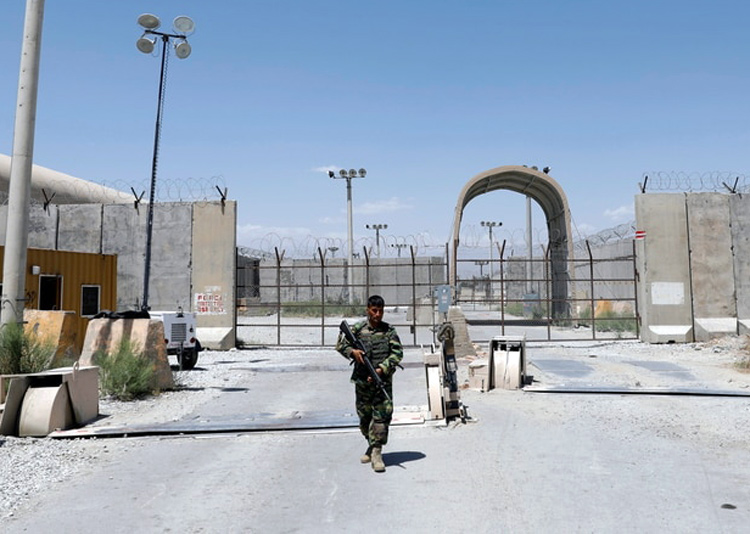An Afghan soldier on guard after U.S. departure from giant Bagram air base July 2. It had been the hub of Washington’s military operations in its 20-year-long war in Afghanistan. Most forces flew out overnight, turning off power and water without notifying the new Afghan commander when they were leaving. The hasty withdrawal, including the flight of Washington’s allies, reflects the U.S. rulers’ defeat in their longest war ever.
Washington’s grinding “forever war” cost the lives of almost 50,000 Afghan civilians and tens of thousands of Afghan soldiers. And 2,400 U.S. troops killed and 20,000 wounded.
The Joseph Biden administration has ordered a total withdrawal, building on a drawdown initiated under the previous Donald Trump administration, to be completed by Sept. 11, the 20th anniversary of the al-Qaeda terror attacks on the World Trade Center and Pentagon. Those attacks provided Washington with a pretext for its invasion.
The reactionary Islamist forces of the Taliban have already taken control of almost a third of Afghanistan, and are advancing on Bagram. Many Afghan army units are in retreat or have surrendered. A new disaster faces the Afghan people, the latest in more than two centuries of intervention and oppression by foreign powers.
Washington’s pullout mirrors the withdrawal of Soviet troops after Moscow’s occupation from 1979 to 1988 was defeated by U.S.-backed Islamist forces, some of whom evolved into the leadership of al-Qaeda.


